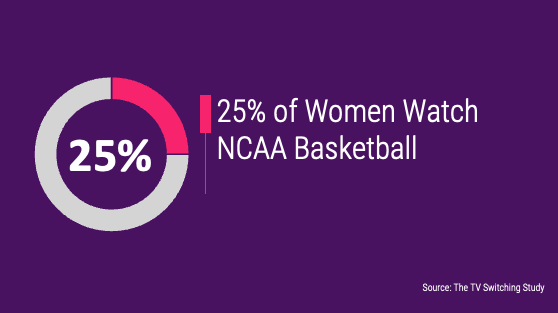
Two women have created a frenzy for sports marketing
Unless you have been living under a rock you will have heard of global pop star Taylor Swift. Similarly, if you have any interest in sports, even a minor one, you’ve probably also heard of college basketball standout Caitlin Clark. However, for those of you that aren’t up to speed on their mutual effect on women in sport, and women interested in sports, allow me to explain.
Caitlin Clark is arguably the best female college basketball player to have ever played. She holds records for Division I career and single-season scoring in points and three-pointers and is one of the most electric shooters of the past 25 years. In the lead up to the NCAA women’s championship, the Elite 8 matchup of Clark’s Iowa vs. LSU (a rematch of last year’s final) set records for most-watched women’s basketball game ever at 12.3 million viewers. Iowa’s next game against tournament stalwart UConn saw that record broken with an audience of 14.4 million. And in the NCAA championship game against undefeated South Carolina, the final audience numbers ended up just shy of 18.9 million viewers, with a peak of almost 24 million, making it the most watched college basketball game ever (men’s or women’s) since 2019. Not including the Olympics, the only female-led sporting telecast to draw more viewers was the 2015 Women’s World Cup soccer match between Japan and USA, which drew 26.7 million. The “Caitlin Clark effect” is a very real phenomenon.
Amazon recently extended its streaming rights for the WNBA (Clark is the de facto #1 pick for the April 15th WNBA draft), signing a two-year deal that will showcase 21 games each season, including the Championship Game of the WNBA’s Commissioner’s Cup. Similarly, ESPN just announced that they will be carrying at least 25 national games across ABC, ESPN, ESPN2, and ESPN Deportes as well as all playoff games. The Indiana Fever, who are expected to draft Ms. Clark, have been slated for eight games, the most in the ESPN package, and a nod to Clark’s audience draw. Throughout the college season, Iowa games set records for attendance, ticket prices, and viewership all over the country, even selling out away games.
And then there’s Taylor Swift. Late last year, Taylor Swift began dating NFL’s Travis Kelce, star tight end of the Kansas City Chiefs. And immediately, Taylor’s throngs of devoted fans flocked to the NFL. Kelce jersey sales spiked 400% in the ensuing weeks, and Kelce’s Chiefs went on to win their second consecutive Super Bowl, and the third in five years. The buzz surrounding Kelce and Swift’s relationship saw social media explode with football riffs on Taylor’s music, and Taylor’s fans repping Chiefs gear. One agency evaluated the impact that Taylor Swift had on the Chiefs brand and that of the NFL as an eye-popping $331 million (calculated before the AFC championship game). And, while it isn’t all due to Ms. Swift, female viewership in the NFL was the highest it has ever been since reporting began in 2000.
In short, the buzz around Misses Swift and Clark has been able to magnify interest in women’s sport.
The Circana Take:
- The hype is converting into real audience scale. It can be capitalized on by establishing new fanbases and cultivating existing ones.
- Sports is key to streaming, as its one of the two main reasons people don’t cord-cut (the other is local news). Prime Video is at the forefront showing WNBA and NFL games. And, with its recent switch to ad-supported viewing, ad revenue from these two leagues is sure to command a premium.